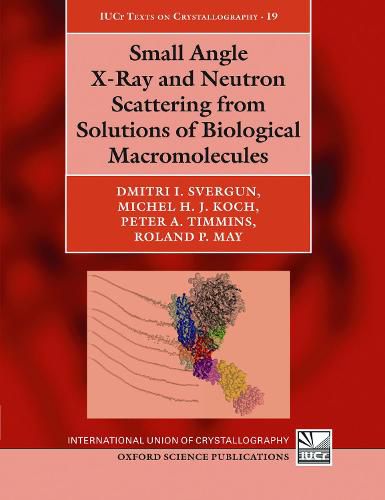Readings Newsletter
Become a Readings Member to make your shopping experience even easier.
Sign in or sign up for free!
You’re not far away from qualifying for FREE standard shipping within Australia
You’ve qualified for FREE standard shipping within Australia
The cart is loading…






Small-angle scattering of X-rays or neutrons is a technique that allows one to study the structures and interactions of disordered materials like polymers in the solid state, melt or solution or metal clusters in alloys. It is also the method of choice to characterize biological macromolecules in solution, in particular when they cannot be crystallized. A further advantage of the technique is that it can easily be combined with standard perturbation methods such as temperature and pressure jumps and stopped flow mixing thus offering useful information complementary to spectroscopic methods. The book describes all aspects of the technique: instrumentation, sample requirements, data interpretation and modelling methods in a comprehensive way and gives examples of applications in various fields of biophysics and biochemistry. Appendices describe the mathematical background and additional resources relevant to the method.
$9.00 standard shipping within Australia
FREE standard shipping within Australia for orders over $100.00
Express & International shipping calculated at checkout
Small-angle scattering of X-rays or neutrons is a technique that allows one to study the structures and interactions of disordered materials like polymers in the solid state, melt or solution or metal clusters in alloys. It is also the method of choice to characterize biological macromolecules in solution, in particular when they cannot be crystallized. A further advantage of the technique is that it can easily be combined with standard perturbation methods such as temperature and pressure jumps and stopped flow mixing thus offering useful information complementary to spectroscopic methods. The book describes all aspects of the technique: instrumentation, sample requirements, data interpretation and modelling methods in a comprehensive way and gives examples of applications in various fields of biophysics and biochemistry. Appendices describe the mathematical background and additional resources relevant to the method.